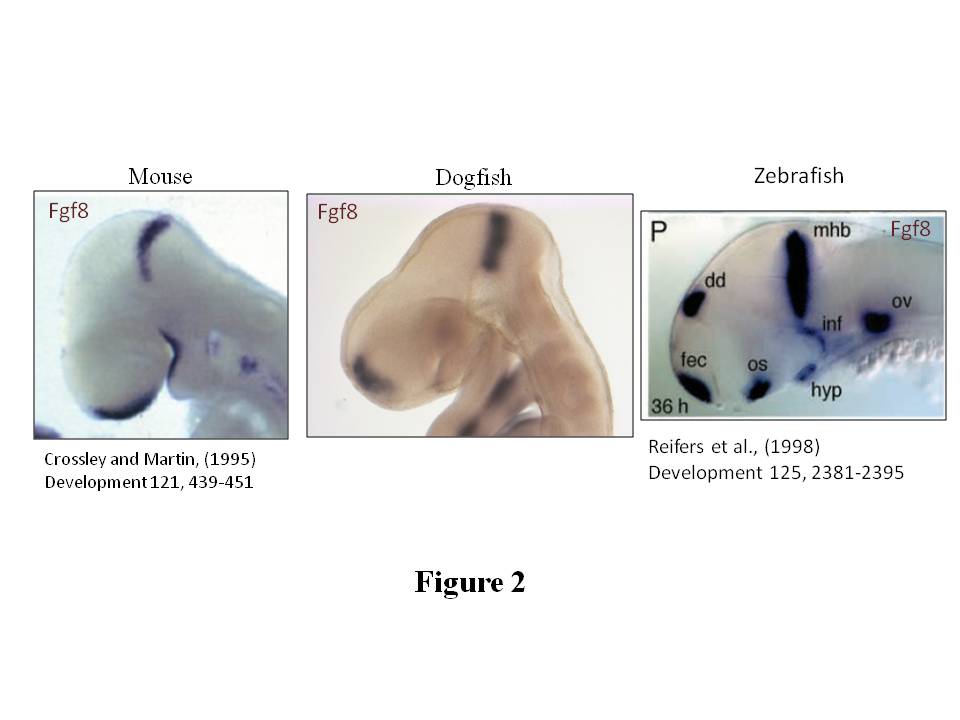This book review originally appeared in Development. Alfonso Martinez Arias reviews “Cells to Civilizations: The Principles of Change that Shape Life ” by Enrico Coen.
Book info:
Cells to Civilizations: The Principles of Change that Shape Life. By Enrico Coen. Princeton University Press (2012) 360 pages ISBN 9780691149677 $29.95 (hardback)
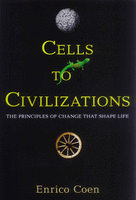 In 1953, Alan Turing, a mathematician who had enabled the allies to break the Nazi communication codes – thereby making a significant contribution to ending the war in Europe – turned his attention to biology. Acknowledging the chemical make-up of living systems, he wondered what kind of reactions could generate the spatial patterns that are so pervasive in the outer layers of plants and animals. He noted that carefully coordinated interactions between an activator and an inhibitor, coupled to their diffusion, would, under certain conditions, be able to generate stable patterns of spots and stripes that resemble some of those found in nature. This simple chemical circuit had the potential to explain many phenotypes and as such has received attention over the last 50 years, although Turing himself only studied it as a proof of principle.
In 1953, Alan Turing, a mathematician who had enabled the allies to break the Nazi communication codes – thereby making a significant contribution to ending the war in Europe – turned his attention to biology. Acknowledging the chemical make-up of living systems, he wondered what kind of reactions could generate the spatial patterns that are so pervasive in the outer layers of plants and animals. He noted that carefully coordinated interactions between an activator and an inhibitor, coupled to their diffusion, would, under certain conditions, be able to generate stable patterns of spots and stripes that resemble some of those found in nature. This simple chemical circuit had the potential to explain many phenotypes and as such has received attention over the last 50 years, although Turing himself only studied it as a proof of principle.
Biology is not just about the spots of the leopard. The field encompasses an apparently bewildering array of remarkable facts, from the ability to sense our environment to the workings of the cell cycle or the amazing periods of the cicadas. As our understanding of the elementary composition of biological systems increases, the question emerges whether there are any unifying principles to the variety that is their hallmark. Biology is not rich in laws or principles in the way that the physical sciences are. Thus, if a common thread, a principle of some sort, could be found, running from DNA to the behaviour of a population of ants, or even further to our ability to conceive and execute a painting or a symphony, this would be a remarkable observation with the power to transform our understanding of nature. In Cells to Civilizations, Enrico Coen, who stimulated us with The Art of Genes, shares his insights and solution to this puzzle. What he calls “life’s creative recipe” is claimed to be a collection of simple principles that, when applied to diverse biological systems, reveal a surprising number of similarities and relationships that can be cast into an understandable, explanatory diagram. If true, it is tantalisingly close to a unified theory for biology. Furthermore, Coen dares to extend it further and explores the possibility that his recipe applies to culture, thus claiming to establish a seamless connection from genes to the paragon of human nature – its creativity.
Understanding heredity, development, evolution and the mind are the big challenges of biology. Coen sets out in search of a general explanation that encompasses the structure and function of each challenge and brings them together. He recounts that similar principles have been dreamt of before, but hastens to add that nobody has managed to produce something lasting. However, we are told that here we might find this elusive idea. Do not be daunted by the scope of the book, which is written for a wide audience, although it contains enough science for biologists and anthropologists to ponder and argue with Coen. For the rest, it is an easy read, particularly as the biology it contains is peppered with vignettes drawn from painting and art history, which act as a guide for the more dry science that forms the meat of the argument.
Having outlined the problem, and taking evolutionary biology as a reference, Coen rephrases some of the notions associated with Darwinism to put forward seven principles that can be seen at work at many levels in biology and which are the fabric of “life’s creative recipe”: population variation, persistence, reinforcement, competition, cooperation, combinatorial richness and recurrence. These principles are then applied to several biological questions, to bring together different phenomena under a unifying umbrella. “Life’s creative recipe”, at least qualitatively, provides a common mechanism underlying diverse processes at different scales of time and space. It is a deceptively simple double-feedback loop, resembling an abstraction of Turing’s chemical machine but looking more like a Moebius strip. At the heart of the loop is a positive catalytic system (the principle of reinforcement), which is restrained by the negative effect: the principle of competition. The book unfolds as a sequential application of these principles to the major problems of biology, and shows that when these opposing forces are applied to a specific process they reveal related behaviours. The recipe is brought to bear on evolutionary theory and developmental biology in four chapters of about 50 pages each. From here the pace slows down and Coen launches into neurobiology, which is less familiar territory for him. He carries us slowly through his view of sensory neurobiology, learning and memory: a remarkable tour de force. The promise of a general recipe appears to work. As simplified examples, if the recipe has ‘reproductive success’ at the centre of the engine, ‘genes’ as activator and ‘environmental limitations’ as inhibitor, it models evolution. Plug in ‘firing’ and ‘neural inhibition’ onto ‘synaptic strength’ in the same recipe and you have learning. The patterns that shape life at different levels emerge from a regulated dialogue between opposites. Simple and effective. Interesting references to art history will retain your interest through the more challenging parts of the book. I particularly enjoyed the reference to the biologist and medieval armour expert Bashford Dean on the evolution of the helmet as a paradigm of biological evolution.
Having dealt with biology, Coen becomes ambitious and in Chapter 11 tackles culture. He acknowledges that this is a serious challenge and tells us that “we should be careful not to push (…) resemblances too far” and that “it is important to stand back to view the relationship between culture and the other processes at an appropriate level of abstraction”. I agree on both accounts, and the reader should bear Coen’s warning in mind when reading the book. At such a high level of abstraction, relationships can emerge that might not be real. To use one of the analogies in the book: there is a portrait of Ambroise Vollard by Cézanne, which was reinterpreted by Picasso. However, if we looked at the Picasso alone, without knowing about this relationship, we would very likely make different interpretations as to what the canvas represents. Sometimes we see what we want to see. In the end, the problem with abstractions in science, particularly with qualitative ones, is that they turn into metaphors of limited value. Science is about the ability of a thought to explain detail rather than to describe a loosely defined reality. Herein lies an important consideration for the still young biological sciences. When the physicists strive to find unified theories, they have numbers to aim for and experiments that they can do – experiments that have drowned more than one sublime theory. In physics, knowing whether we understand something is well defined: either you get the number or your predictions – which often consist of numbers – are wrong. At first sight, biology is not like this and determining whether or not a certain theory, principle or even idea is right or wrong requires a precise definition of what is being implied or said, as well as considerable time to investigate it. So, how can we know whether Coen’s proposed “life’s creative recipe” really tells us something about nature, or whether his book provides just another pleasant read?
Caveat lector. In physics, unifying theories have a strong quantitative basis and outlook. The theories live or die by how much of the detail, in particular of the quantitative world, they can explain and how much they can predict. Art, on the other hand, is content with the view it creates of a reality, which it captures without constraints. Enrico Coen is aware of this difference and only time will tell what exactly his effort has achieved, how much it explains and how much it predicts. It is likely that recent developments in the quantitative analysis of biological processes will lead to a rewriting of biology over the next few years. This in turn should provide some precise elements to the general argument developed in Cells to Civilizations, which is still very much grounded on the qualitative analysis of biological phenomena.
 (2 votes)
(2 votes)
 Loading...
Loading...
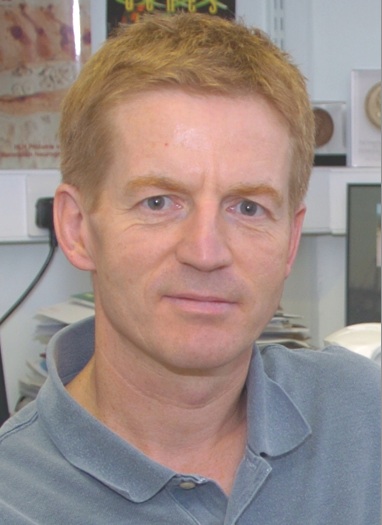 Here at Development, we’re delighted to welcome François Guillemot to the team of academic editors. François will be replacing Alexandra Joyner, who is soon to step down as our neurodevelopment expert. François heads up the Division of Molecular Neurobiology at the National Institute for Medical Research in London, and his research focuses on the regulation of neurogenesis in the mouse forebrain.
Here at Development, we’re delighted to welcome François Guillemot to the team of academic editors. François will be replacing Alexandra Joyner, who is soon to step down as our neurodevelopment expert. François heads up the Division of Molecular Neurobiology at the National Institute for Medical Research in London, and his research focuses on the regulation of neurogenesis in the mouse forebrain.

 (3 votes)
(3 votes) (No Ratings Yet)
(No Ratings Yet)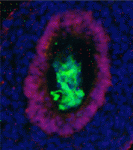 The directed differentiation of pluripotent stem cells into endodermal derivatives, including insulin-producing pancreatic β cells, has considerable clinical promise in cell replacement therapies. The first step in this process is the conversion of pluripotent stem cells into definitive endoderm (DE). Here (p.
The directed differentiation of pluripotent stem cells into endodermal derivatives, including insulin-producing pancreatic β cells, has considerable clinical promise in cell replacement therapies. The first step in this process is the conversion of pluripotent stem cells into definitive endoderm (DE). Here (p. 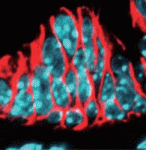 Congenital biliary atresia is an incurable disease of newborn infants that is characterised by deformation of the gallbladder and biliary duct system. Yoshiakira Kanai and co-workers now report (p.
Congenital biliary atresia is an incurable disease of newborn infants that is characterised by deformation of the gallbladder and biliary duct system. Yoshiakira Kanai and co-workers now report (p. 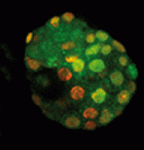 During embryogenesis and gametogenesis, the DNA methyltransferases Dnmt3A and Dnmt3B establish the genome-wide methylation patterns that are essential for mammalian development and reproduction. The catalytically inert Dnmt3-like (Dnmt3L) is known to regulate de novo methylation in the germline but does it function in the early embryo? Déborah Bourc’his and colleagues have been investigating this question and, on p.
During embryogenesis and gametogenesis, the DNA methyltransferases Dnmt3A and Dnmt3B establish the genome-wide methylation patterns that are essential for mammalian development and reproduction. The catalytically inert Dnmt3-like (Dnmt3L) is known to regulate de novo methylation in the germline but does it function in the early embryo? Déborah Bourc’his and colleagues have been investigating this question and, on p. 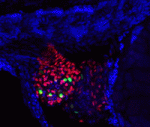 Human hearts do not regenerate after a heart attack because adult mammalian cardiomyocytes proliferate poorly in response to injury. By contrast, zebrafish regenerate heart muscle after trauma by inducing cardiomyocyte proliferation. Studies of zebrafish heart regeneration might, therefore, identify ways to repair damaged human hearts. Here (p.
Human hearts do not regenerate after a heart attack because adult mammalian cardiomyocytes proliferate poorly in response to injury. By contrast, zebrafish regenerate heart muscle after trauma by inducing cardiomyocyte proliferation. Studies of zebrafish heart regeneration might, therefore, identify ways to repair damaged human hearts. Here (p. 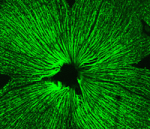 During retinal development, seven retinal cell types are specified from a common pool of retina progenitor cells (RPCs). Several proneural basic helix-loop-helix (bHLH) transcriptional regulators, including Atoh7 and Neurod1, direct the intrinsic programming of RPCs but how do individual bHLH factors influence RPC fate? On p.
During retinal development, seven retinal cell types are specified from a common pool of retina progenitor cells (RPCs). Several proneural basic helix-loop-helix (bHLH) transcriptional regulators, including Atoh7 and Neurod1, direct the intrinsic programming of RPCs but how do individual bHLH factors influence RPC fate? On p. 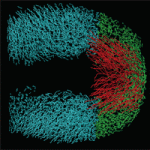 The tailbud is the posterior leading edge of the growing vertebrate embryo. Now, by measuring the three-dimensional cell flow field of the zebrafish tailbud, Scott Holley and co-workers reveal a posterior flow within the tailbud that reflects ordered collective cell migration (p.
The tailbud is the posterior leading edge of the growing vertebrate embryo. Now, by measuring the three-dimensional cell flow field of the zebrafish tailbud, Scott Holley and co-workers reveal a posterior flow within the tailbud that reflects ordered collective cell migration (p.  Although classic repressors undoubtedly silence transcription, genome-wide studies show that many repressors are associated with actively transcribed loci. Reynolds, O’Shaughnessy and Hendrich review this evidence and propose that the modulation of gene expression by co-repressor complexes provides transcriptional fine-tuning that drives development. See the Review on p.
Although classic repressors undoubtedly silence transcription, genome-wide studies show that many repressors are associated with actively transcribed loci. Reynolds, O’Shaughnessy and Hendrich review this evidence and propose that the modulation of gene expression by co-repressor complexes provides transcriptional fine-tuning that drives development. See the Review on p.  Rister, Desplan and Vasiliauskas review the mechanisms that generate and maintain sensory receptor expression patterns and compare them to those that control sensory receptor expression patterns in the mouse retina and in the mouse and fly olfactory systems. See the Primer article on p.
Rister, Desplan and Vasiliauskas review the mechanisms that generate and maintain sensory receptor expression patterns and compare them to those that control sensory receptor expression patterns in the mouse retina and in the mouse and fly olfactory systems. See the Primer article on p. 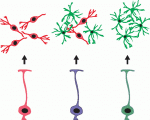 As part of the ‘Development Classics’ series, Malatesta and Gotz look back at their 2000 Development paper, in which they showed that radial glial cells act as neural stem and progenitor cells in development – a discovery that has led to a change in the concept of neural stem cells in the adult brain. See the Spotlight on p.
As part of the ‘Development Classics’ series, Malatesta and Gotz look back at their 2000 Development paper, in which they showed that radial glial cells act as neural stem and progenitor cells in development – a discovery that has led to a change in the concept of neural stem cells in the adult brain. See the Spotlight on p.  At the recent EMBO/EMBL symposium ‘Germline – Immortality through Totipotency’, researchers discussed the mechanisms that establish and control totipotency, with an eye towards the mechanisms that may endow germ cells with the ability to propagate totipotency across generations. See the Meeting Report by Torres-Padilla and Ciosk on p.
At the recent EMBO/EMBL symposium ‘Germline – Immortality through Totipotency’, researchers discussed the mechanisms that establish and control totipotency, with an eye towards the mechanisms that may endow germ cells with the ability to propagate totipotency across generations. See the Meeting Report by Torres-Padilla and Ciosk on p.  (6 votes)
(6 votes)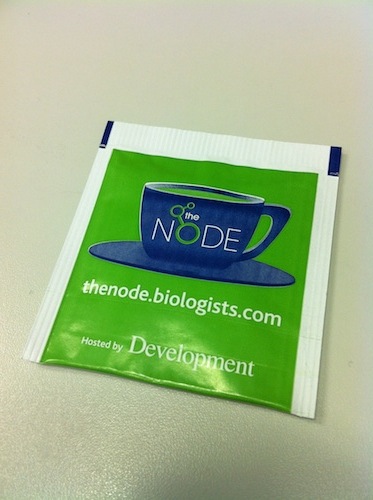 Node news
Node news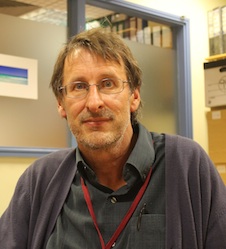 We heard about some exciting research this last month of the year. In an
We heard about some exciting research this last month of the year. In an 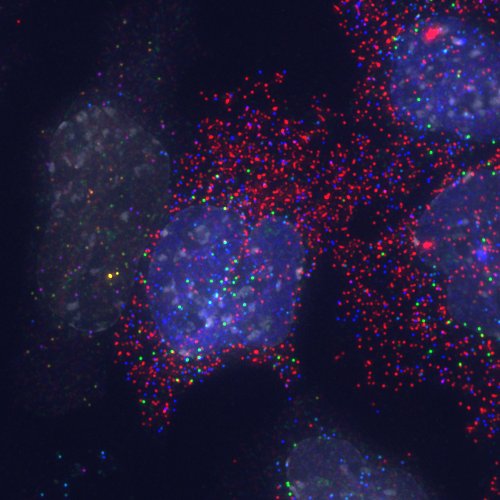
 In 1953, Alan Turing, a mathematician who had enabled the allies to break the Nazi communication codes – thereby making a significant contribution to ending the war in Europe – turned his attention to biology. Acknowledging the chemical make-up of living systems, he wondered what kind of reactions could generate the spatial patterns that are so pervasive in the outer layers of plants and animals. He noted that carefully coordinated interactions between an activator and an inhibitor, coupled to their diffusion, would, under certain conditions, be able to generate stable patterns of spots and stripes that resemble some of those found in nature. This simple chemical circuit had the potential to explain many phenotypes and as such has received attention over the last 50 years, although Turing himself only studied it as a proof of principle.
In 1953, Alan Turing, a mathematician who had enabled the allies to break the Nazi communication codes – thereby making a significant contribution to ending the war in Europe – turned his attention to biology. Acknowledging the chemical make-up of living systems, he wondered what kind of reactions could generate the spatial patterns that are so pervasive in the outer layers of plants and animals. He noted that carefully coordinated interactions between an activator and an inhibitor, coupled to their diffusion, would, under certain conditions, be able to generate stable patterns of spots and stripes that resemble some of those found in nature. This simple chemical circuit had the potential to explain many phenotypes and as such has received attention over the last 50 years, although Turing himself only studied it as a proof of principle.
